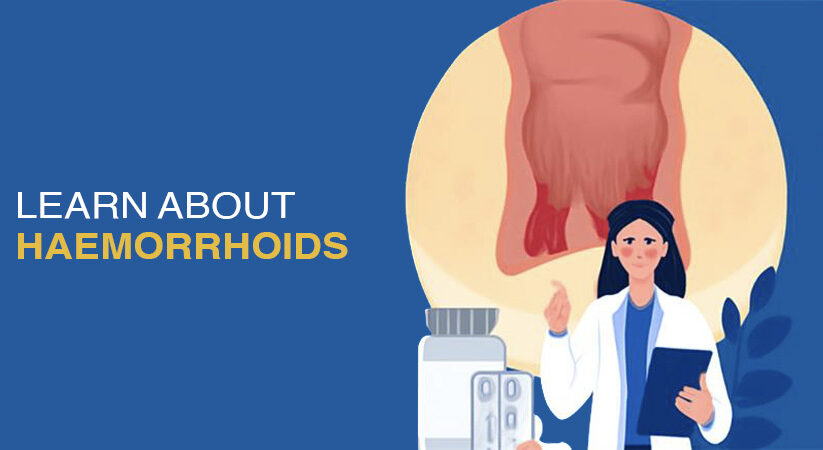Do you feel swelling around the anus or a mass coming out when you pass motions along with bleeding or pain or discomfort? It could be due to haemorrhoids, which are swollen blood vessels in the anus. It’s highly common among people, and as much as 50% of adults over 50 have them.
Everyone has anal cushions, which are a normal aspect of anatomy; when they become swollen, they are called haemorrhoids. They are cushions of tissues and blood vessels near the anus. However, only when they cause symptoms do they become a problem that needs to be addressed. Continue reading to learn more about haemorrhoids, their symptoms, causes, and treatment options.
What are Haemorrhoids (Piles)?
Haemorrhoids are more commonly known as piles. It’s a condition where the blood vessels surrounding the anus or the lower portion of the rectum become inflamed. These swollen blood vessels may cause bleeding or pain in the rectal region. They are uncomfortable and itchy, impacting your daily life.
Many times, they get better on their own and may go away. However, if your piles are bleeding and disrupting your quality of life, it’s best to consult a doctor immediately and get the right treatment.
Types of Haemorrhoids
Based on where haemorrhoids are located, there are two types:
Internal haemorrhoids:
These develop inside the rectum and are often not seen in the initial stages. Prolapsed haemorrhoids can happen when these internal haemorrhoids protrude through the anus. Manual pushing back of these haemorrhoids may be needed and can be painful.
External haemorrhoids:
This is the most common type of haemorrhoids, and it develops under the skin surrounding the anus. You may feel it as a bulge around the anus. External haemorrhoids often get thrombosed when a blood clot forms inside the haemorrhoids. It can be very painful and needs proper medical attention.
Comparison of Symptoms
Internal Haemorrhoids Symptoms:
- Painless rectal bleeding during bowel movements
- Mucus discharge
- Sensation of incomplete evacuation
- Prolapse through the anus in more advanced stages
External Haemorrhoids Symptoms:
- Pain and discomfort while sitting
- Visible swelling around the anus
- Itching or irritation in the anal area
- Hard lump due to a blood clot (thrombosed haemorrhoid)
Causes of Piles
Haemorrhoids are formed due to increased pressure in the lower rectum. These may include:
- Straining during bowel movements
- Chronic constipation or diarrhoea
- Prolonged sitting on the toilet
- Lifting heavy objects constantly
- Standing for long hours daily
- Family with a history of haemorrhoids
- Obesity
- Pregnancy and childbirth
- Low-fiber diet
- Ageing, leading to weakening of the support tissues of the rectum
These factors cause the stretching, swelling, or bulging of the blood vessels in the anus and rectum.
Symptoms of Piles
Symptoms of haemorrhoids vary according to their kind. Some of the common symptoms of piles are:
- Itching
- Irritation
- Swelling
- Bleeding
- Pain in the anal and surrounding region
- Feeling a lump in the anus





Comments